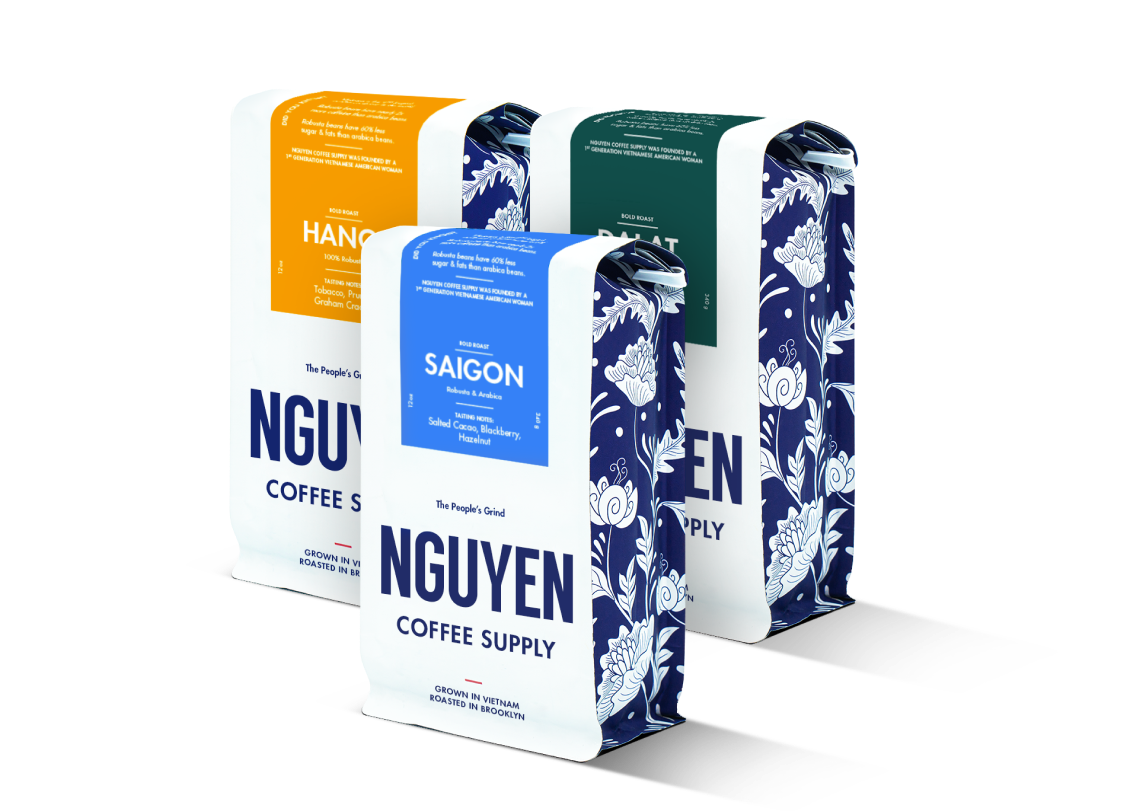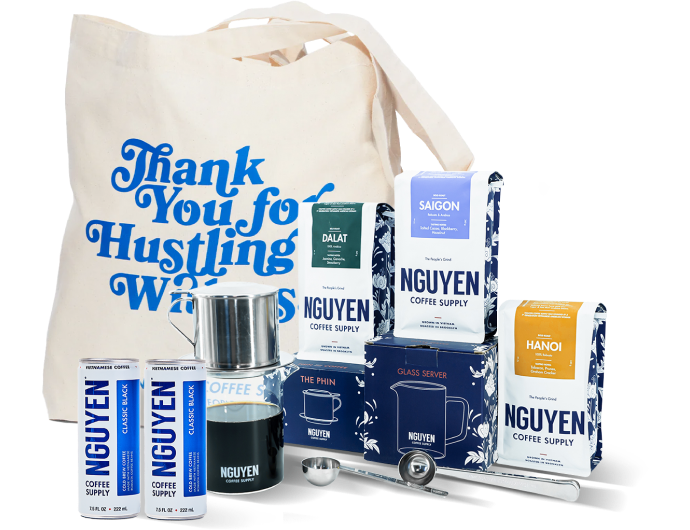

- FEATURED ON IMBIBE

Create for yourself or as a gift for your loved ones
Subscribe nowMe and mom just enjoyed the Nguyen phin drip experience. Wow. Proud of your work. We without hesitation enjoy the Vietnamese coffee and recommend your products. Thank-you to the Nguyen staff and tradition. From Canada eh!
If you've stumbled across this page, you've probably noticed we are all about Vietnamese coffee—we source it straight from Vietnam and fresh roast it here in Brooklyn. But maybe some of you are wondering, "What is Vietnamese coffee?"
If you've never tried Vietnamese coffee, don't worry. With the rising popularity of coffee from Vietnam, you'll be seeing a lot more of it soon. The most common way it's found in the US is ca phe sua—a coffee beverage that's made with sweetened condensed milk. Served hot or cold, the drink is super popular in Vietnam, where the iced version provides real relief for those hot days.
To try this drink, just head to your local Vietnamese restaurant and order one ca phe sua, or, if you prefer your coffee cold, a ca phe sua da. (Or use this handy recipe for how to make Vietnamese coffee at home).

While we love ca phe sua, Vietnamese coffee can refer to so much more than one drink. For one, it's a whole category of drinks from Vietnam, where café culture was first introduced by the French. In the modern day, some of these fun variations found in Vietnamese coffeeshops include coconut coffees and even an egg coffee that was popularized in the Vietnamese capital city of Hanoi.
But Vietnamese coffee also refers to coffee produced in Vietnam (think Colombian coffee...except Vietnamese). Fun fact: Vietnam is actually the world's second-largest producer of coffee, right after Brazil. While the bulk of this production consists of the darker robusta bean, there is a growing number of farmers who are also growing arabica, a lighter bean that's more popular in the West.
Ready to learn more about Vietnamese coffee? Here are the different types of coffee grown in Vietnam—plus the best ways you can try Vietnamese coffee.
Put simply, Vietnamese coffee can refer to the Vietnamese coffee beverage made with coffee from Vietnam plus condensed milk. But it can also refer to any of the coffees grown and produced in Vietnam. These include robusta and arabica, which has two major subcategories called moka and catimor.
About 80% of all Vietnamese coffee production is located in the central highlands region, which is also a hub for tea, rubber, and silk. The provinces of Dak Lak, Lam Dong, and Gia Lai produce the lion's share of coffee in this region.
The central highlands region is known as one of Vietnam's most diverse areas, serving as home for many of Vietnam's 53 ethnic minorities plus much of the country's wildlife such as elephants and gibbons. The biggest nearby city is Da Lat, a breezy mountain town first established as a resort destination for the French.

Robusta beans contain 60% less sugar and fats than arabica beans, which make them bolder and more "robust" in flavor. Tasting notes might include chocolate-y or nutty. Robusta accounts for about 25% of world coffee production.
By contrast, arabica beans skew lighter, sweeter, and fruitier—they also have less caffeine. Grown in higher elevation, arabica plants grow a bit shorter and the beans are more oval-shaped. Arabica accounts for 75% of world coffee production.
Vietnam grows lots of cheaply-produced robusta—intended for applications like instant or powdered coffee—leading many to wrongly assume that all coffee in Vietnam is low quality.
However, that couldn't be further from the truth: not only does Vietnam have thriving arabica productions, many farmers are experimenting with high-quality, premium robusta. And don't forget the role that freshness and roasting has in determining the quality of the final product.